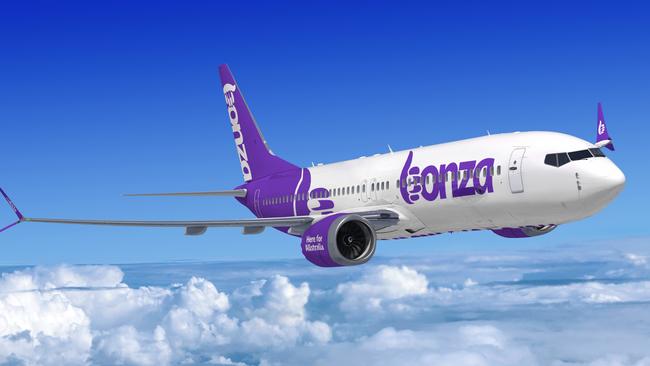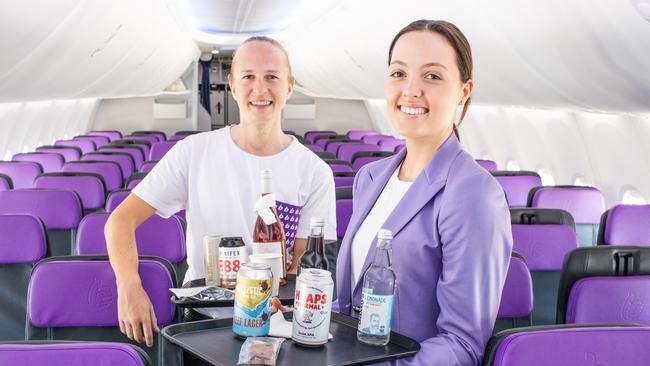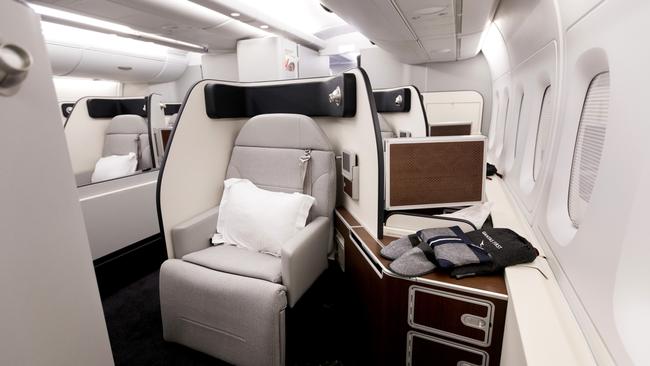What flies ahead for Australian tourists in 2023
From lounge and cabin makeovers to new aircraft and routes, airlines are spreading their wings.

If 2022 was the year the world reopened to travel, 2023 will be the year of new air travel experiences. From new aircraft to new routes, airlines are spreading their wings to tap into the almost insatiable demand for adventures in our backyard and overseas.
Australia can even expect a new airline to take flight, with low-cost carrier Bonza hoping to be airborne before Easter. Boasting a fleet of new Boeing 737-8s, Bonza will join Virgin Australia as the first in the country to operate the “greener” aircraft, which use less fuel and produce 15 per cent lower emissions than their 737-800 predecessor.
Bonza already has three jets at the ready awaiting regulatory approval to fly. Virgin Australia will take delivery of its first 737-8 in April, followed by two more mid-year. Another five will follow from October onwards.

While Bonza’s 737-8s will fly a host of regional routes, including Newcastle and Tamworth to the Sunshine Coast and Cairns to Rockhampton and Mackay, Virgin has grander plans for the narrow-body jets. As well as some existing domestic routes, it will use them on its new Cairns to Tokyo (Haneda) service, taking off in June and marking the airline’s foray into the Japanese market.
“We’re looking forward to taking delivery of eight new 737-8s, with the first expected to arrive in just a few months,” a Virgin Australia spokeswoman says. “These aircraft will allow us to add capacity into the market at a time of extremely high demand, allowing more Australians to access great value and choice when they choose to fly.”
The Virgin Australia livery will also be seen in Vanuatu and Samoa from March, at the same time as a new route between the Gold Coast and Bali takes off.

Daily flights connecting the two premier surfing destinations have been selling well for Virgin, with economy fares about $500 one way, and business class from $1300.
Not to be outdone, Qantas is expecting its own delivery of new aircraft later in the year, in the form of Airbus A220s. Marketed as the “most modern, small, single-aisle aircraft in the world”, the A220s will seat 137 passengers, 25 per cent more than the Boeing 717s they will replace. Ten of those seats will be in business class, with the remainder in economy in a 2-3 configuration. Qantas has 20 A220-300s on order, and will fly the planes on mostly regional routes currently operated by ageing 717s and Embraer E190 jets wet-leased from Alliance Aviation.
Perhaps more thrilling for Qantas frequent flyers is the airline’s return to Hong Kong later this month, followed by a new three-times-a-week service to New York via Auckland from June 14. The flights, on Boeing 787-9s, will go head-to-head with Air New Zealand’s Auckland-New York service launched last year. In readiness for the new route, Qantas is undertaking a complete redesign of its Auckland International Airport lounge, increasing capacity from 244 seats to 340.
Other Qantas lounges set for a 2023 makeover include Adelaide Domestic and Port Hedland, while Rockhampton Airport will get a brand new venue that will offer double the capacity of the existing one.

On the domestic front, Qantas will add Melbourne-Learmonth (Exmouth) on April 30 to meet demand for whale shark season at World Heritage-listed Ningaloo Reef. Scheduled every Thursday and Sunday until October, Boeing 737-800s will fly the non-stop five-hour service, which will save holidaymakers several hours by bypassing Perth.
With regards to many travellers’ favourite aircraft, the A380, Qantas has six refurbished superjumbos in service, with the remaining four in the fleet to make a return this year. Predominantly used on Sydney-London flights via Singapore, Qantas also has the A380s flying Sydney-Los Angeles.
Despite some predicting the demise of the four-engine, double-decker jet during the Covid pandemic, A380s have made a jubilant return to the skies in response to enormous demand.
Singapore Airlines, Emirates and Qatar Airways are all flying A380s to Australia, and Etihad recently announced it would put four superjumbos on its Abu Dhabi-London route. The extra capacity provided by aircraft should help accommodate travel-hungry Australians after limited supply, particularly on international routes in 2022, saw fares skyrocket. Even economy fares climbed into astronomical territory as airlines sought to cover the soaring cost of fuel and recoup heavy losses from two years of reduced flying.
The price outlook for 2023 may not be much brighter for international travellers until demand cools and more competition returns to the market.
There is more room for optimism around domestic fares, with the entry of Bonza set to shake up the lower end of the market, putting pressure on Jetstar and to a lesser degree Virgin Australia. Further expansion into major city routes by Rex will also be to travellers’ advantage, providing more choice and capacity between popular destinations.






To join the conversation, please log in. Don't have an account? Register
Join the conversation, you are commenting as Logout